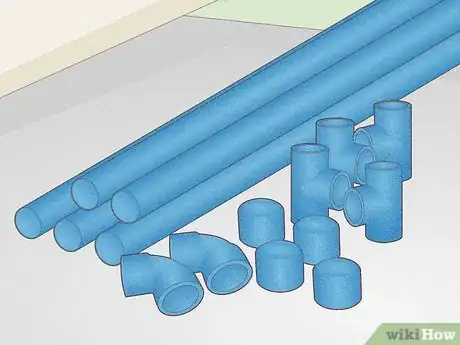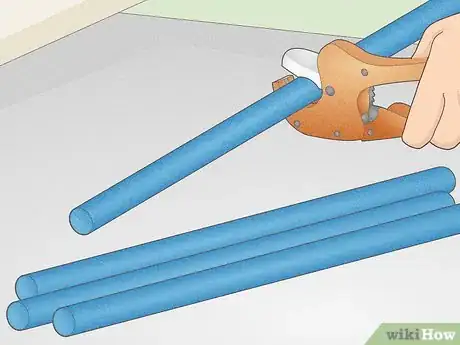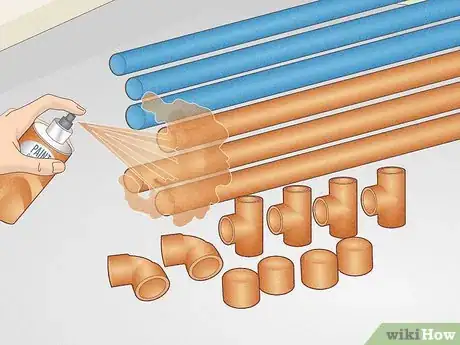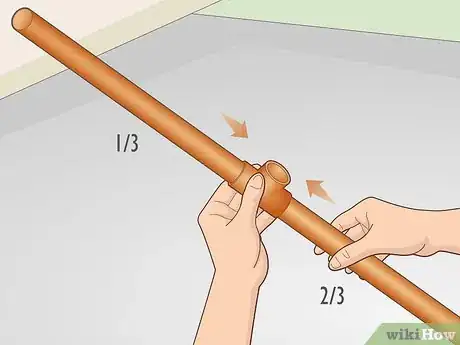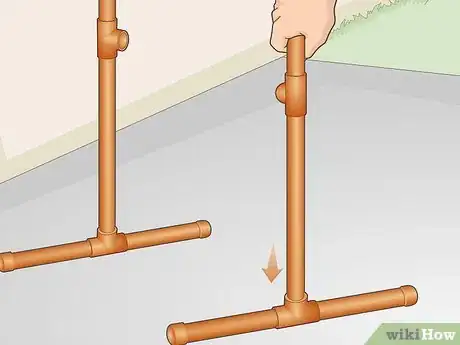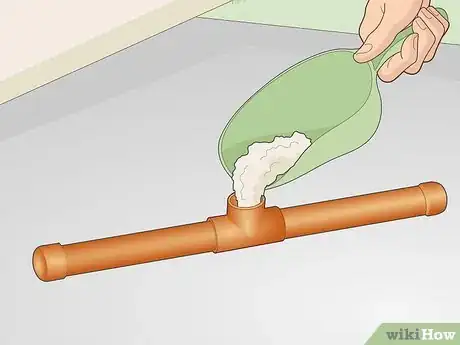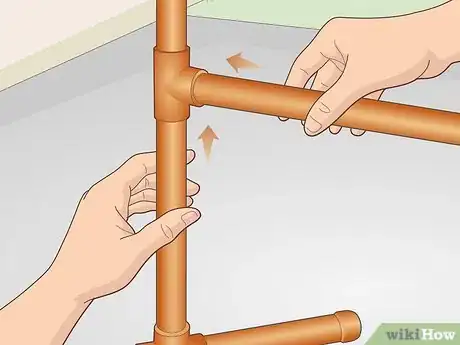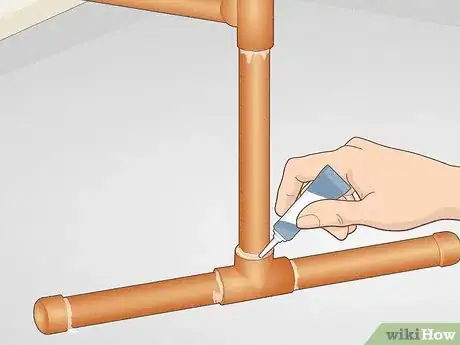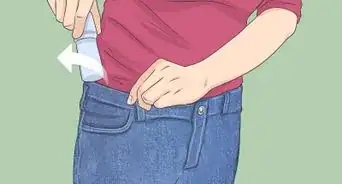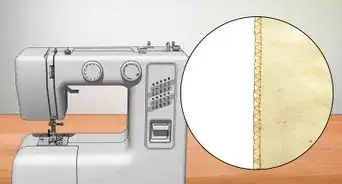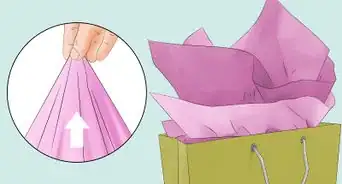X
wikiHow is a “wiki,” similar to Wikipedia, which means that many of our articles are co-written by multiple authors. To create this article, volunteer authors worked to edit and improve it over time.
This article has been viewed 10,785 times.
Learn more...
If you are looking to store clothes away without breaking the bank or rummaging through your closet to find more space, a simple DIY clothes rack out of PVC is a great alternative to storage. Not only is it cheaper than most clothes racks, but it is also customizable and can be modified to fit your space and aesthetic.
Steps
Part 1
Part 1 of 3:
Preparating the Rack
-
1Measure the space you will be putting your clothes rack in. It is important that you measure your space so that you know how much PVC and other materials you will need. Also, measure the length of the clothes you envision hanging on this rack to plan accordingly for the height.
- Keep in mind that the longer the clothes rack, the less sturdy it will be.
-
2Buy your materials. PVC pipe can generally be found at any hardware store. You will need PVC pipe of any desired diameter (although 1" diameter is recommended), two elbow pieces, four caps, and four tee pieces.
- If your hardware store does not cut PVC, you will also need a PVC cutter.
Advertisement -
3Cut your PVC pipe. You can usually have this step done at the hardware store. You will need your PVC pipe cut into a total of ten pieces. You will need two pieces cut to the desired length. For the height, you will need to split it into 1/3 and 2/3s. Four equal pieces of any length will be cut for the feet, but the longer they are the sturdier the rack will be.
-
4Paint your PVC pipe. PVC on its own is not appealing to look at, there are serial codes on the sides and usually, barcodes as well so paint is recommended. There are multiple ways to go about painting PVC pipes, but the easiest and cheapest way is to spray paint them. You can also reuse any wall paint or even use acrylic paint. Acrylic is not advised since it will be hard to get an even finish, you will need multiple coats, and it will add up in cost.
Advertisement
Part 2
Part 2 of 3:
Assembling the Rack
-
1Attach your 1/3 and 2/3 height pieces together using a tee piece. The empty socket should point to the left or right. You will repeat for the other side.
-
2Attach the two feet pieces together using a tee piece. The empty socket of the tee piece will point up. Put on the end caps for the feet pieces as well.
-
3Connect the feet piece to the other assembled height piece. You will place the height piece into the empty socket of the foot's tee piece. Now you should have two long tee structures.
-
4Attach the elbow piece to the open ends of your tee structure. Grab a hand to hold the other tee structure or lean the other structure against something so you can attach the top length pieces using the elbow connectors.
-
5Connect the last length piece to the middle tee connector. This creates some support for your clothes rack.
-
6Hang your clothes. Adjustments may be necessary, so add one article of clothing at a time to see how much your clothes rack can handle. If all of the clothes you anticipated are hung and the rack is stable then you are finished with your project.
- If the clothes rack is somewhat unstable, try advancing to the next step.
Advertisement
Part 3
Part 3 of 3:
Adding Support
-
1Create more stability in the clothes rack by adding sand or rocks to the feet pieces. Detach one of the foot pieces from the tee connector and leave the cap on. Fill the piece with sand or rocks until it is almost full and attach it back onto the tee connector. Repeat for the other three foot pieces.
-
2Ensure all of your pieces are connected as much as possible. Often times it is easy to attach the PVC partially, so make sure you push as hard as possible when attaching the pieces together. You can also touch up any scratched paint that occurs in this process.
-
3Superglue all the joints together for a sturdier clothes rack. If you do not plan on moving this clothes rack out or disassembling it, you can superglue each of the pieces together to ensure they stay in their respective places.
Advertisement
Warnings
- Exercise caution with PVC pipe cutters or any sharp objects you may use to cut the PVC.⧼thumbs_response⧽
- Use proper ventilation and respiratory protection when using spray paint. If spray painting outside, make sure you are facing the direction the wind is blowing in if there is any to ensure the particles do not blow back in your direction.⧼thumbs_response⧽
Advertisement
About This Article
Advertisement

